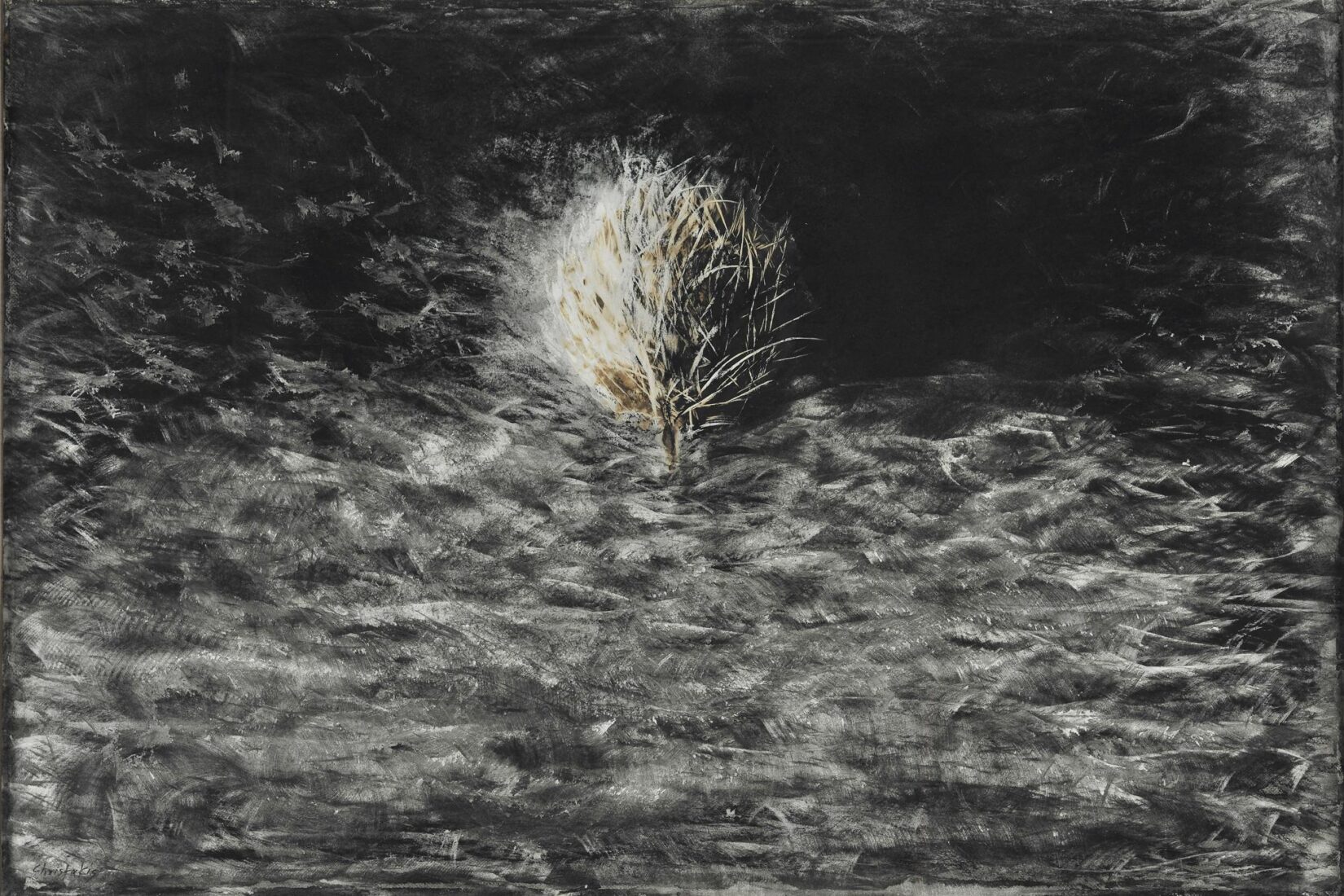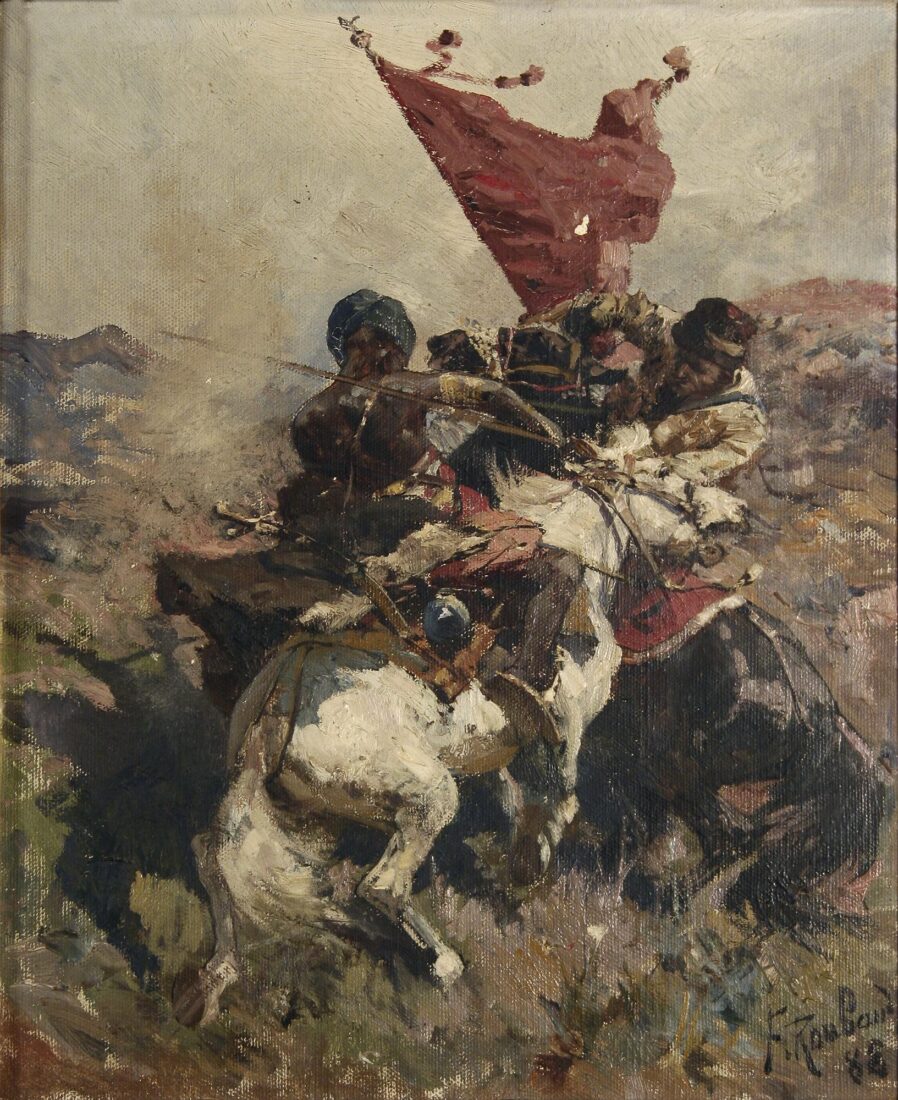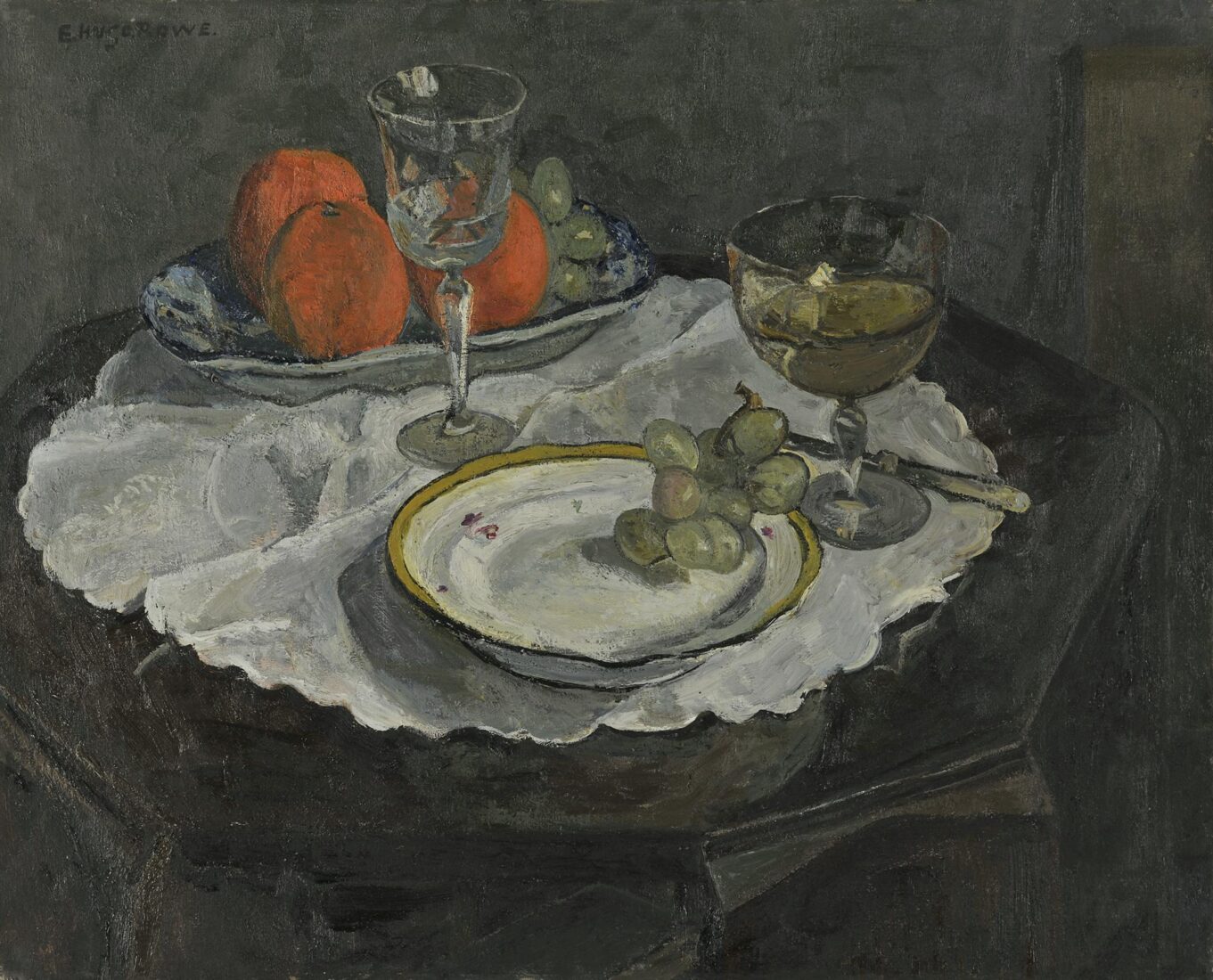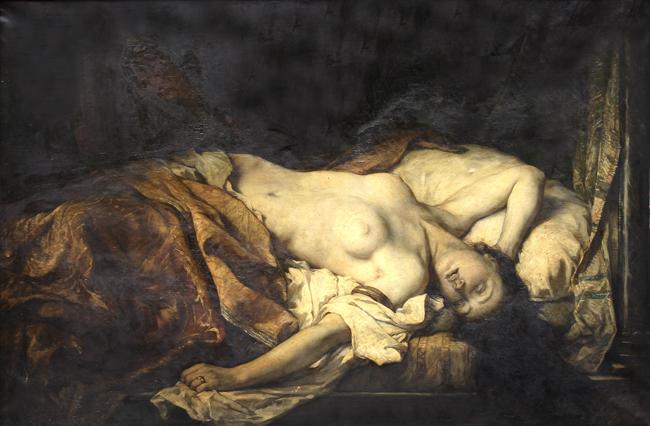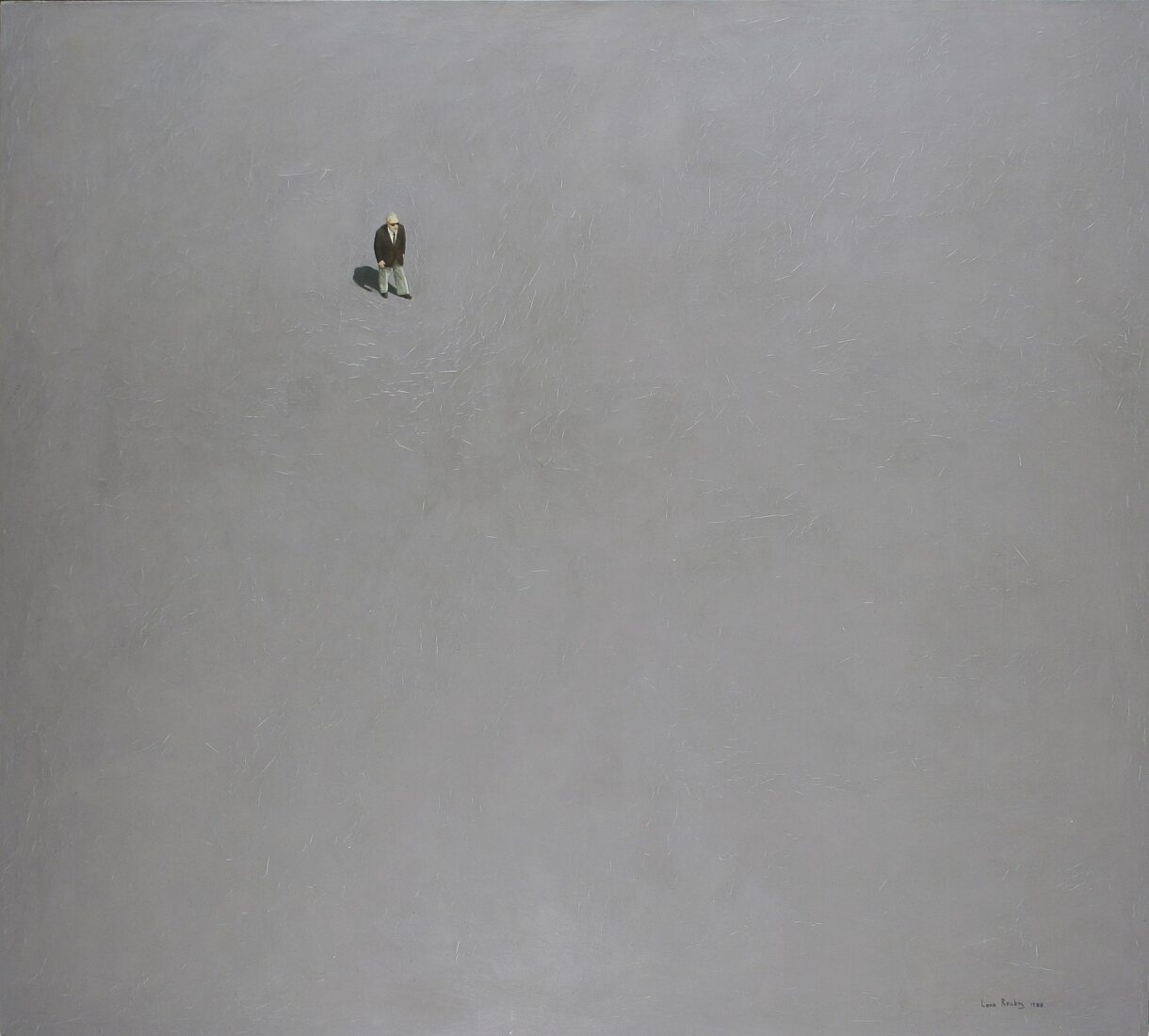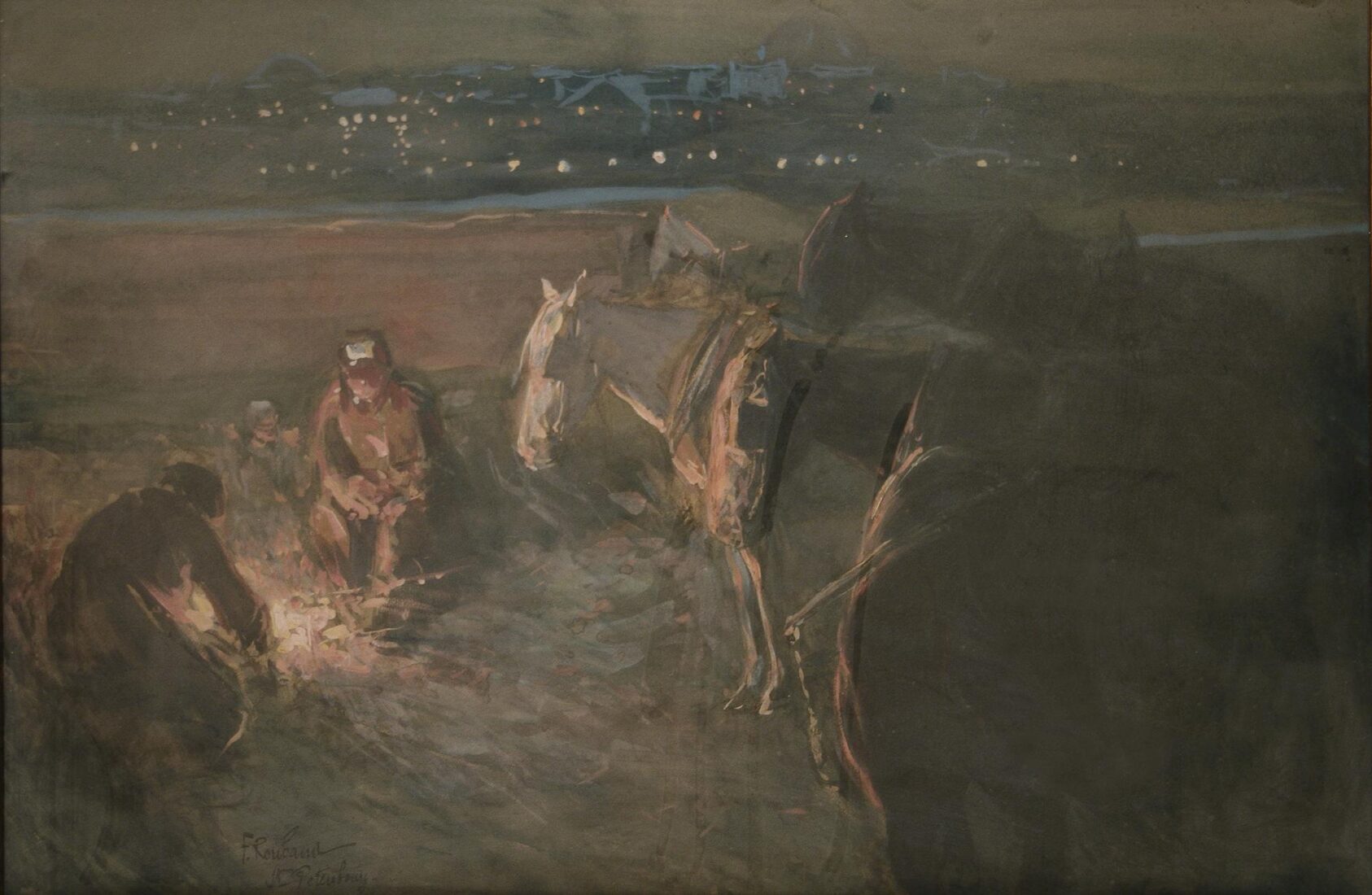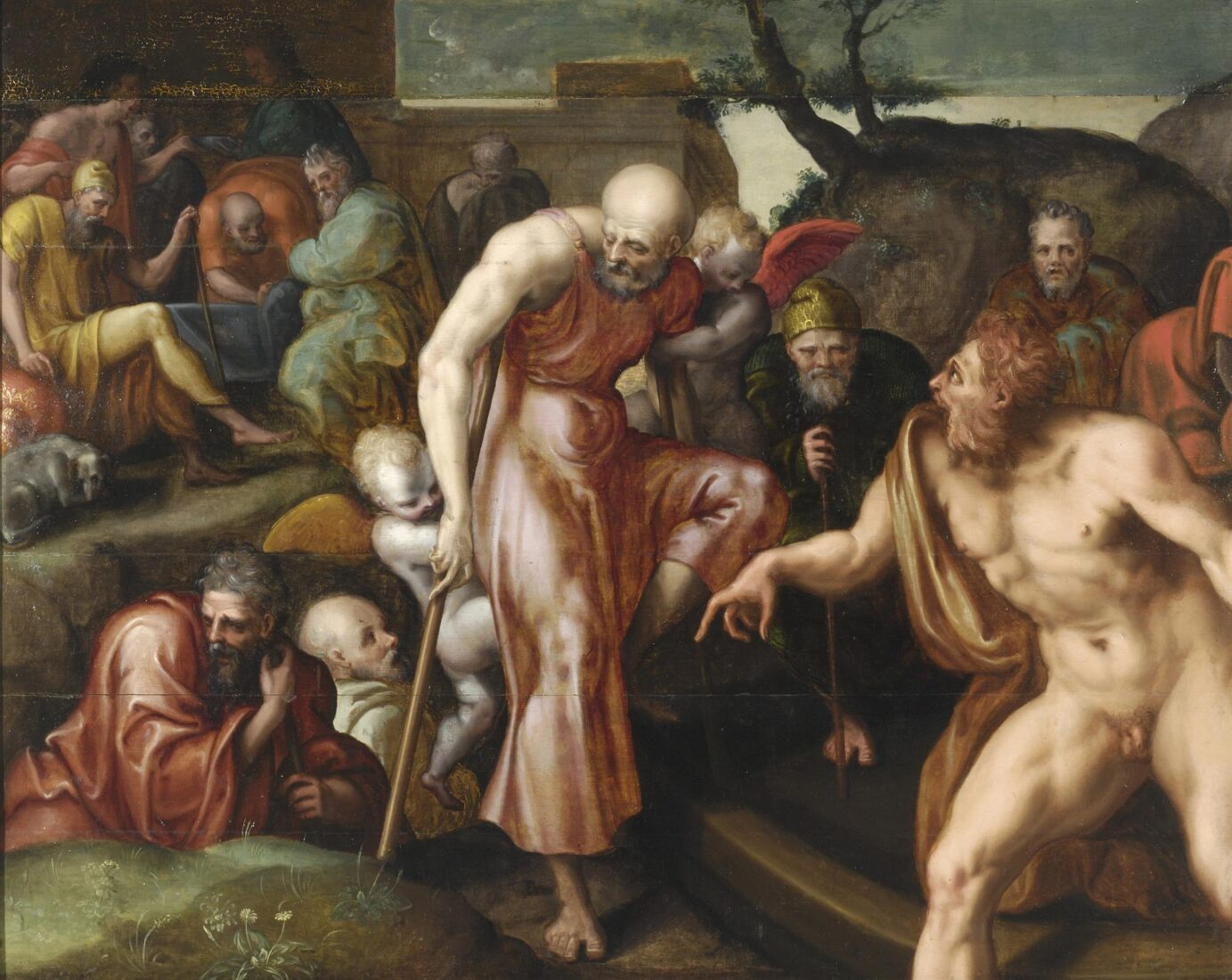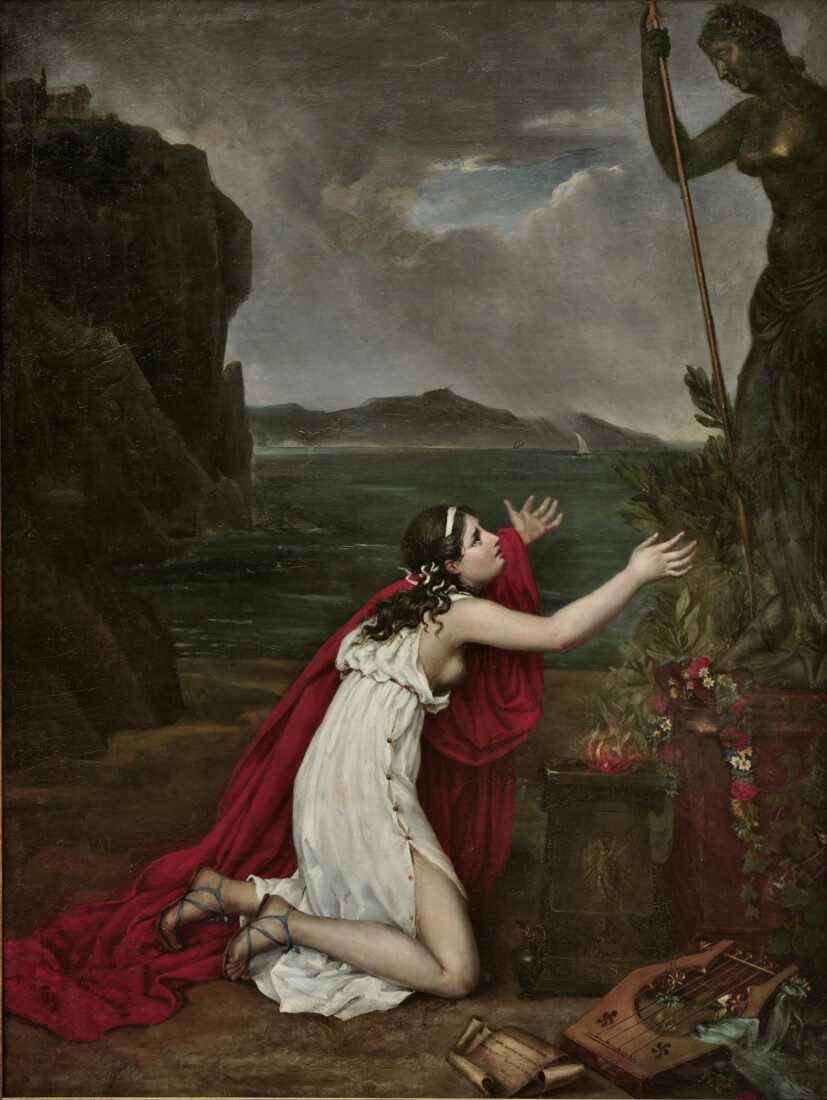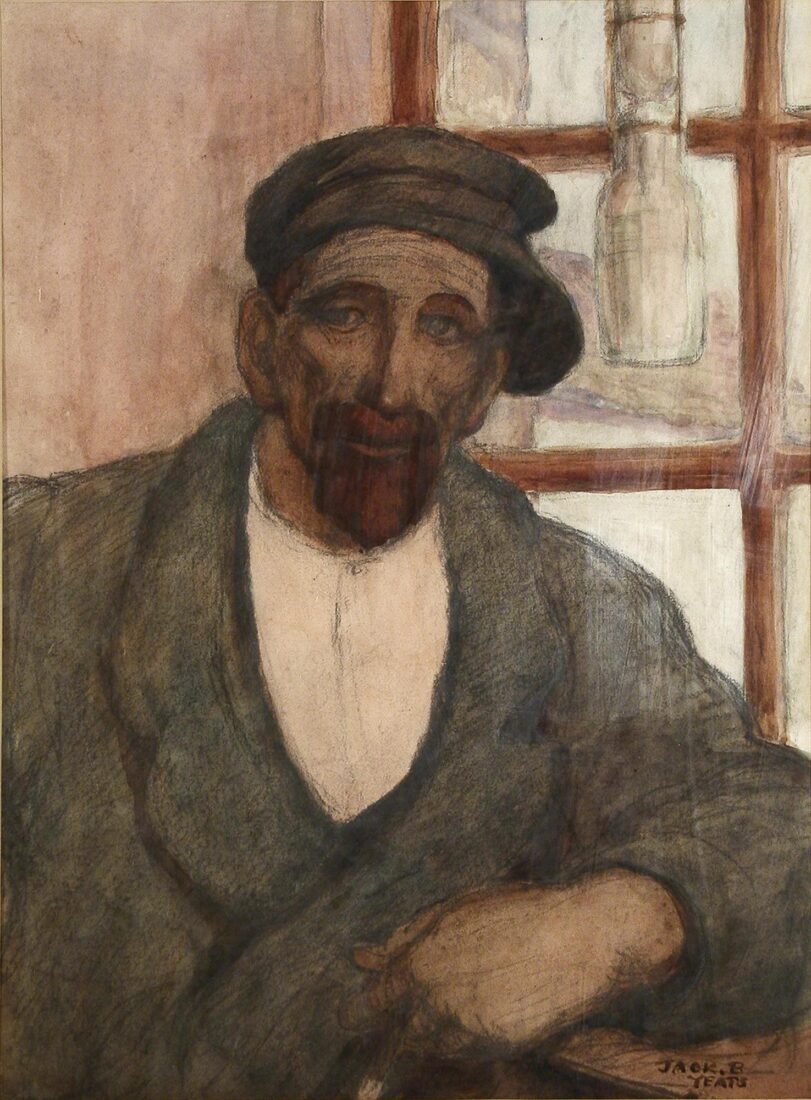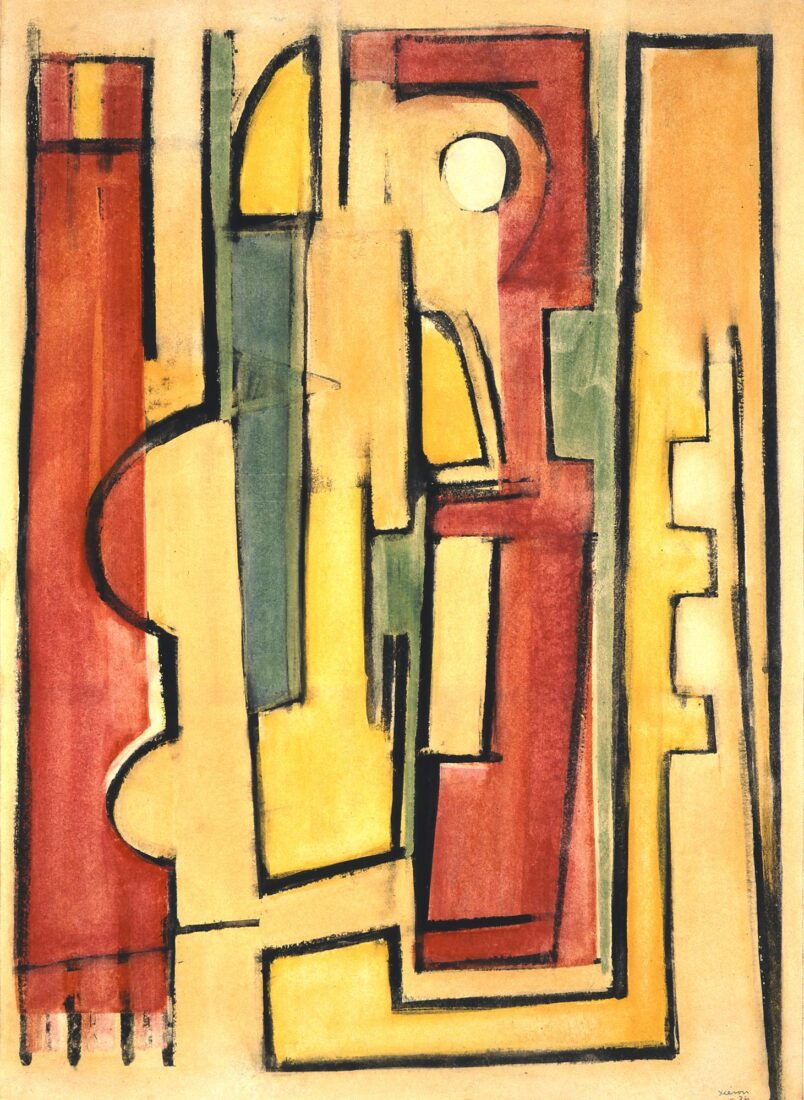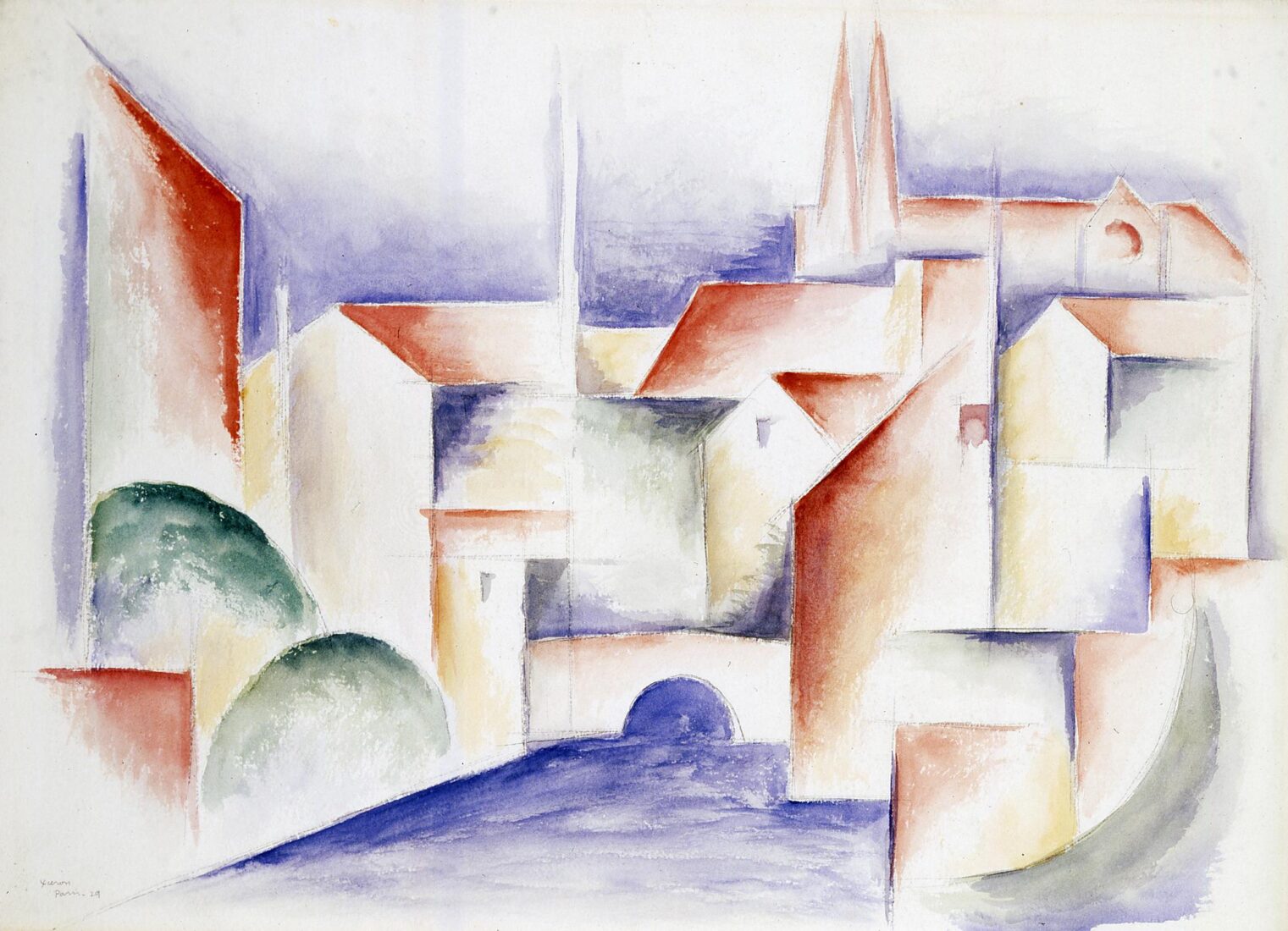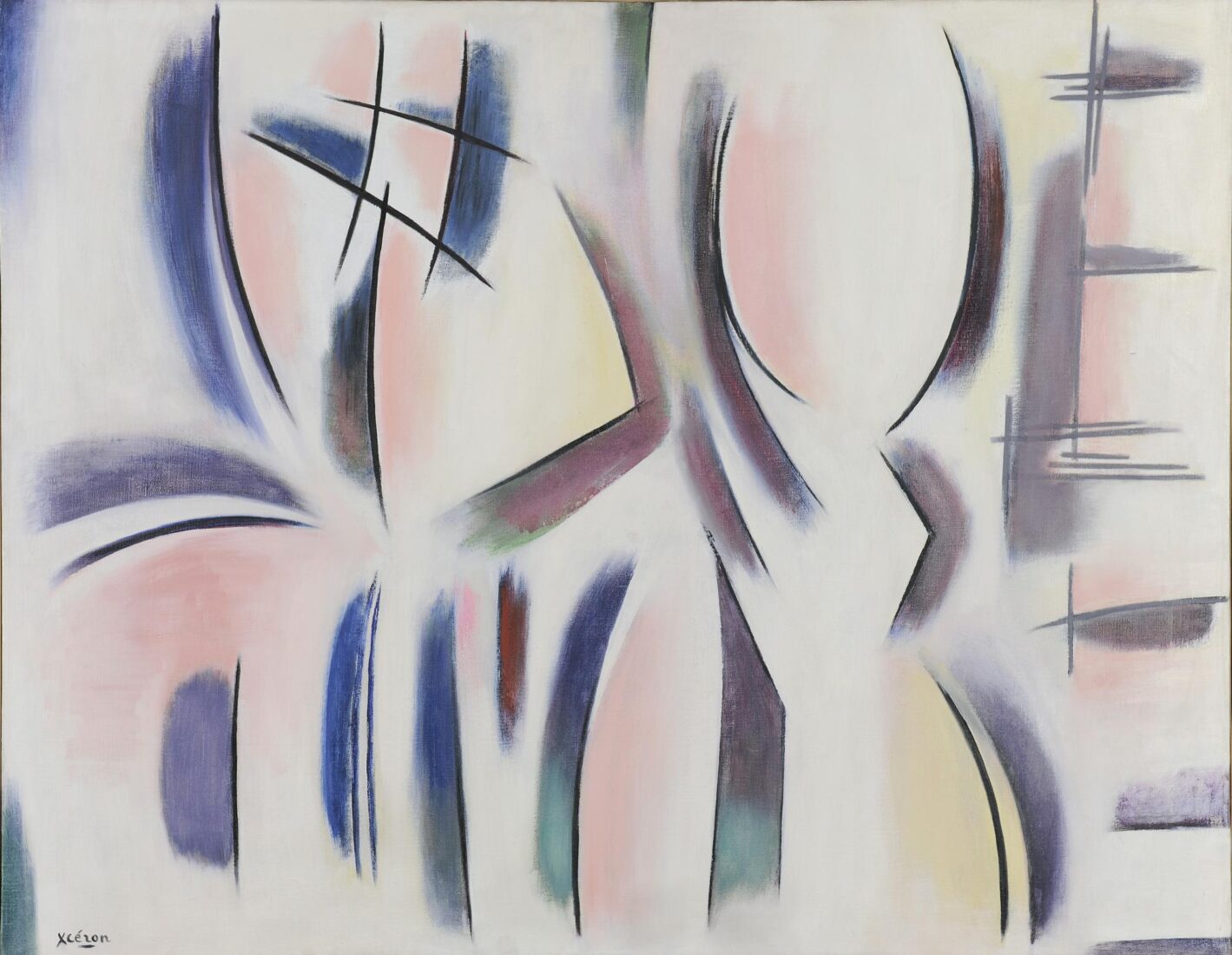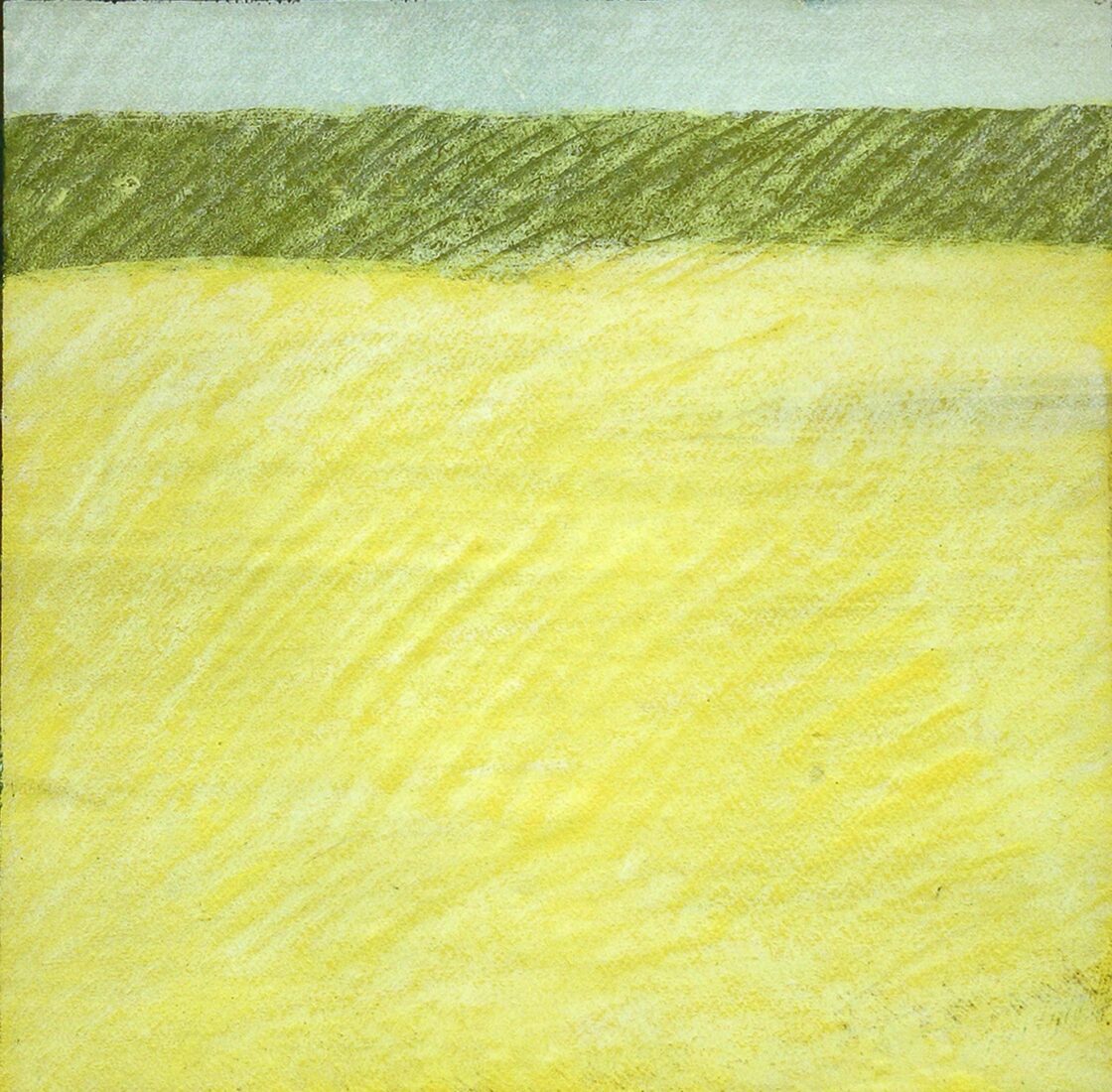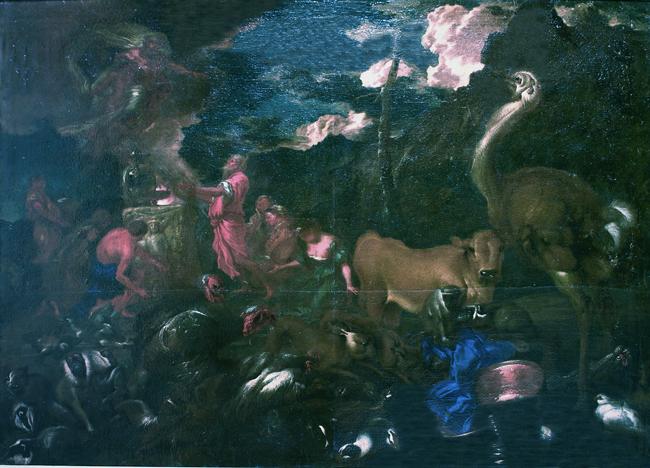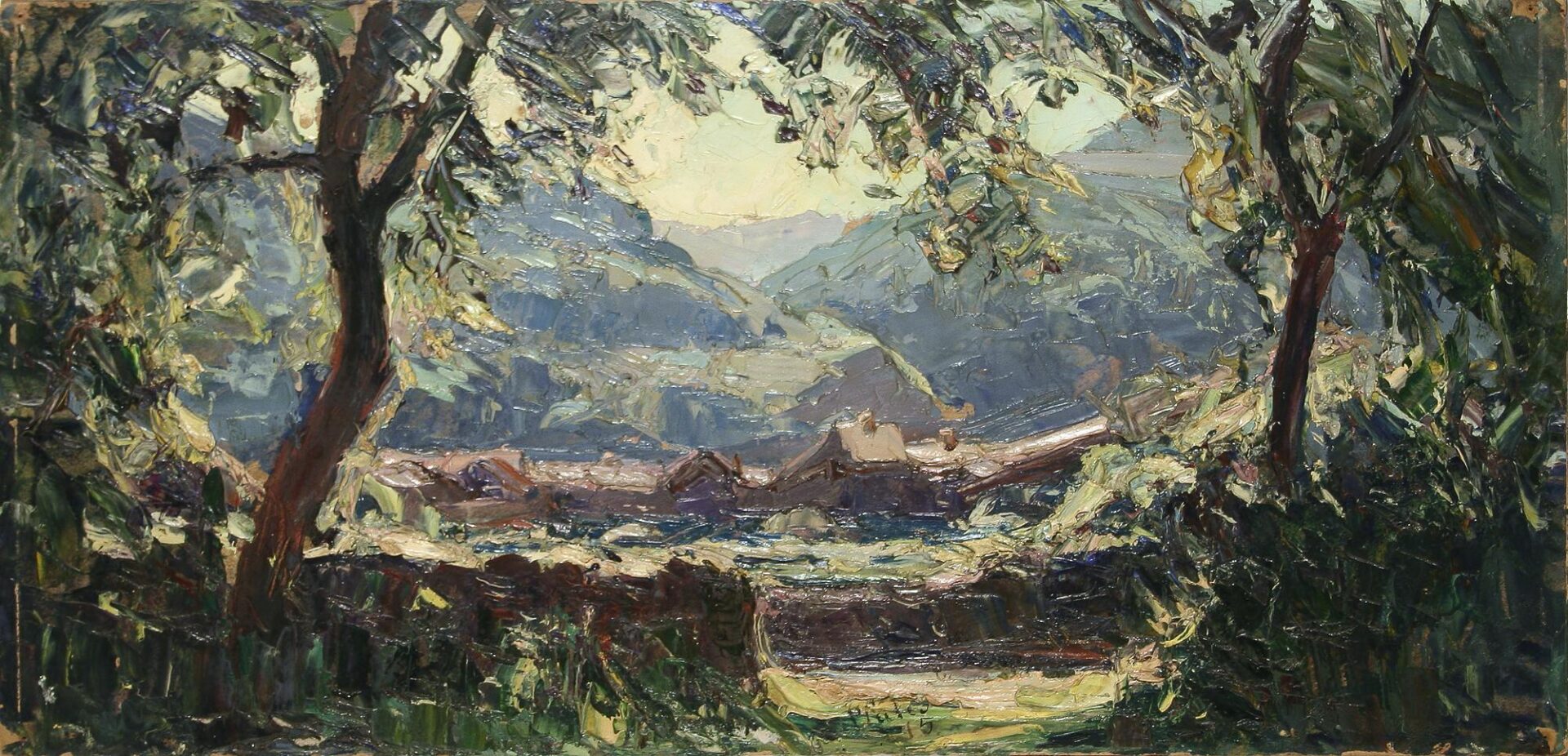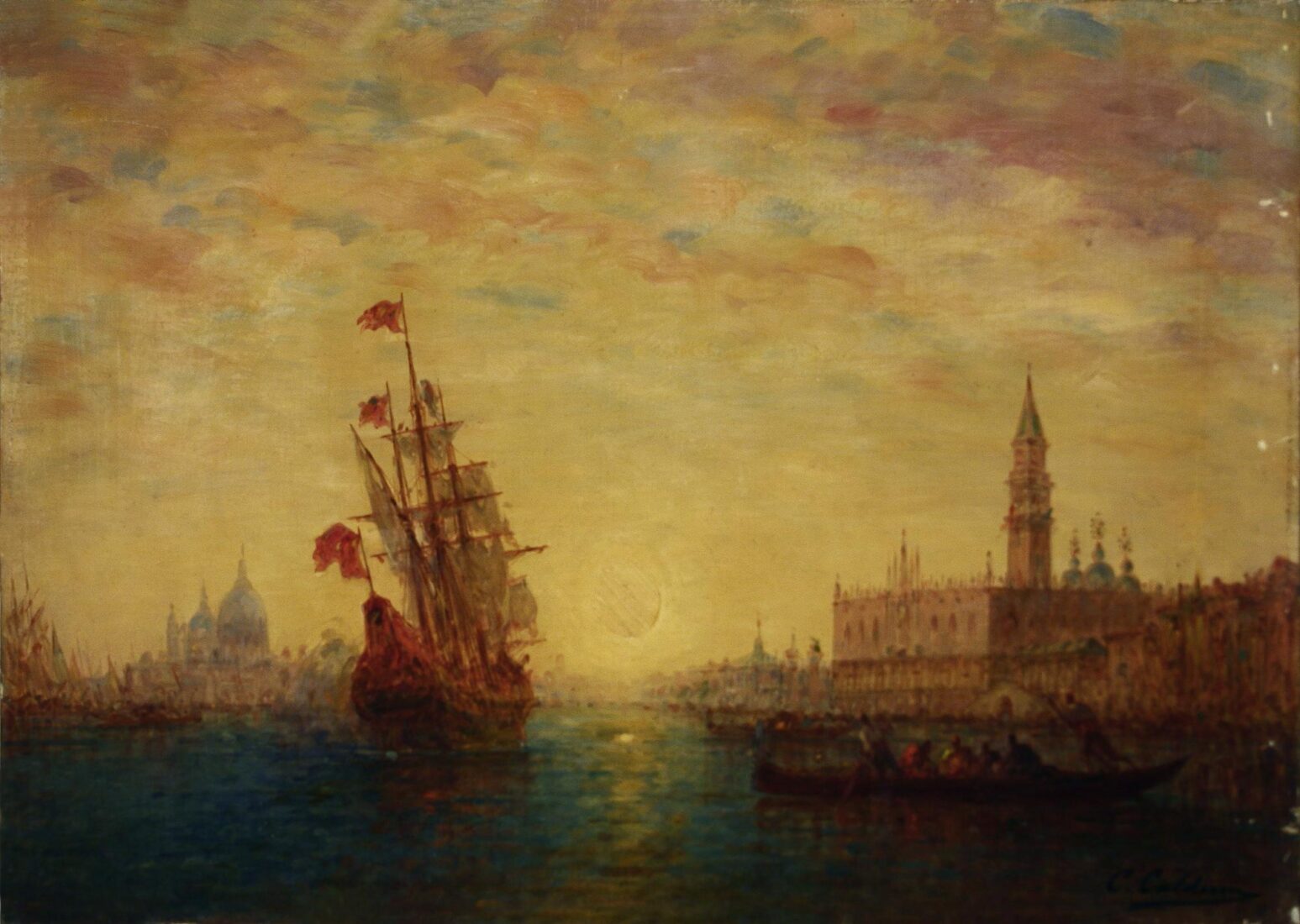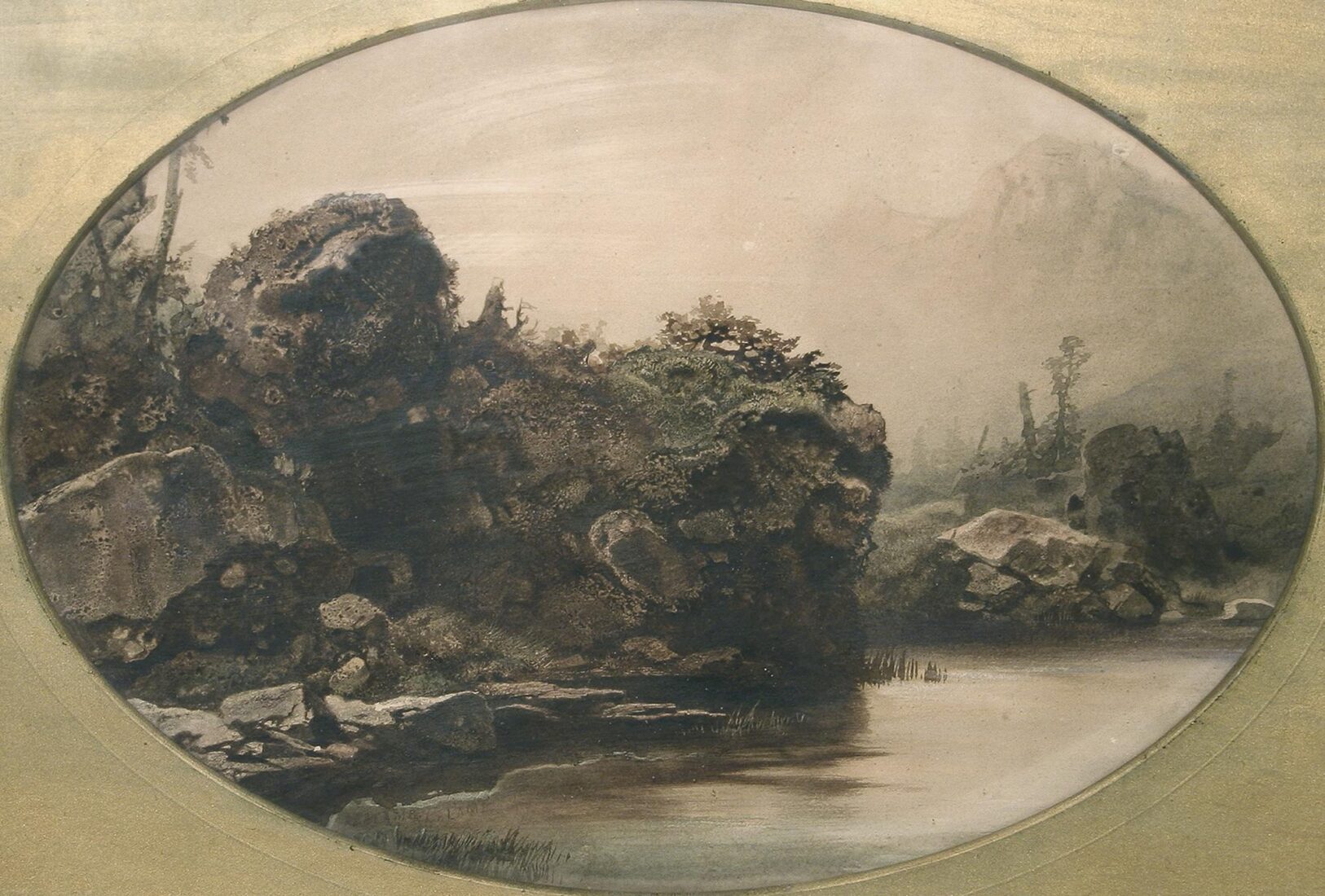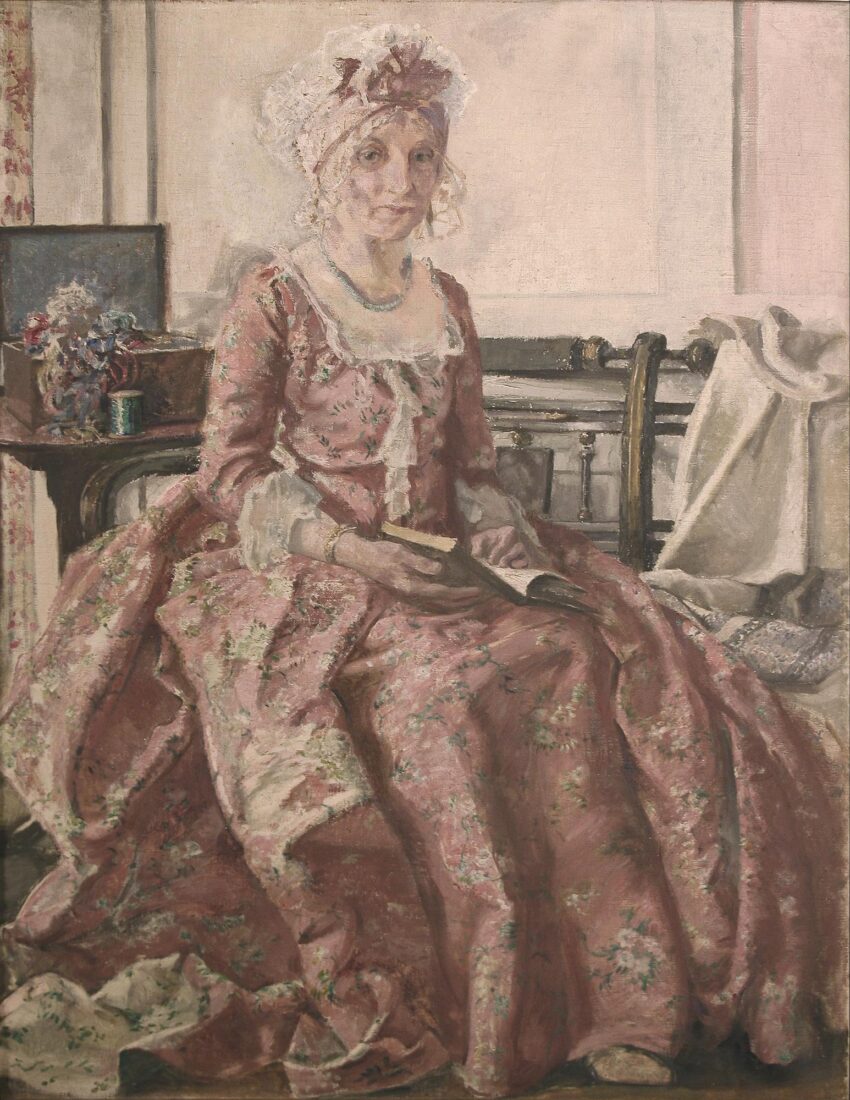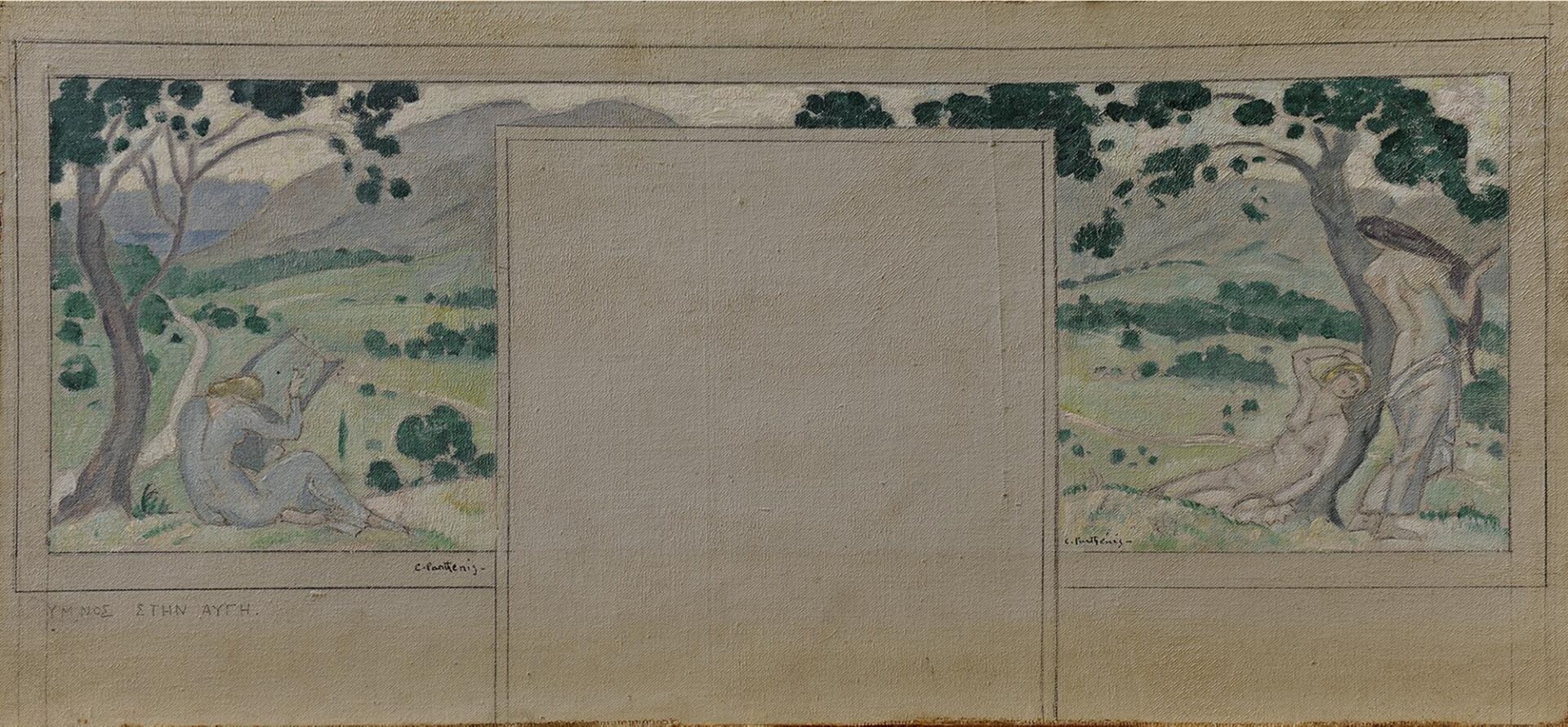

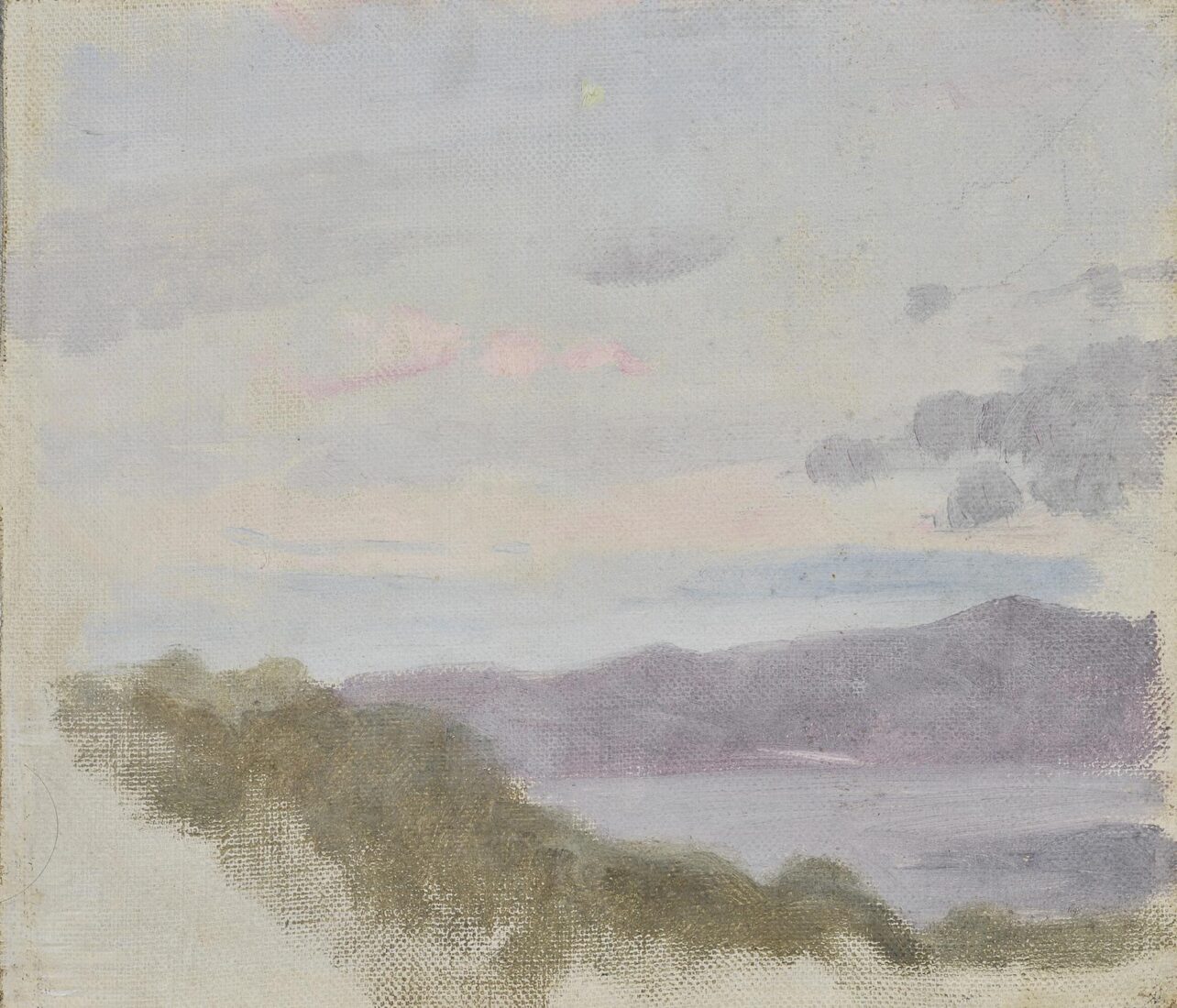
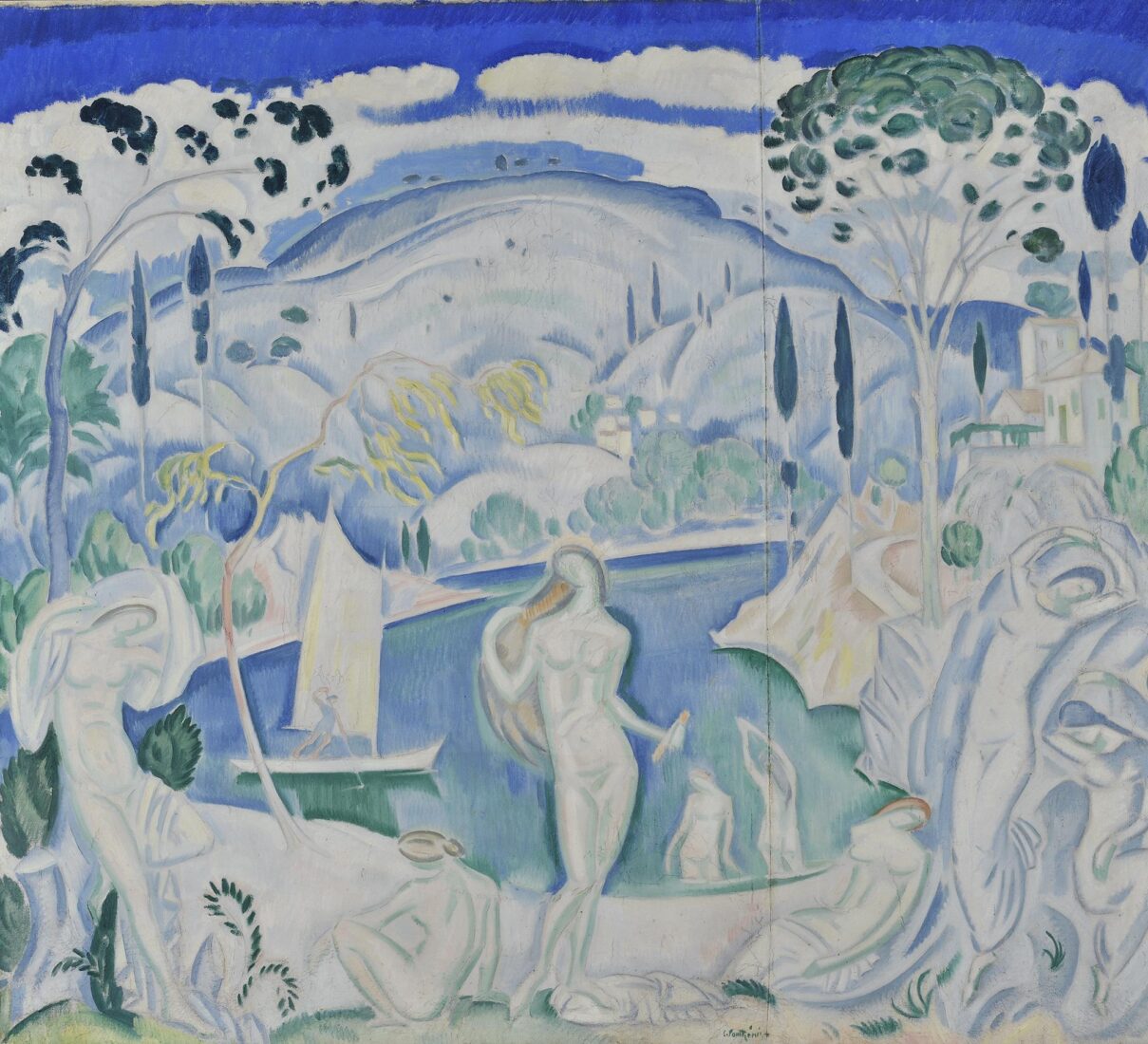
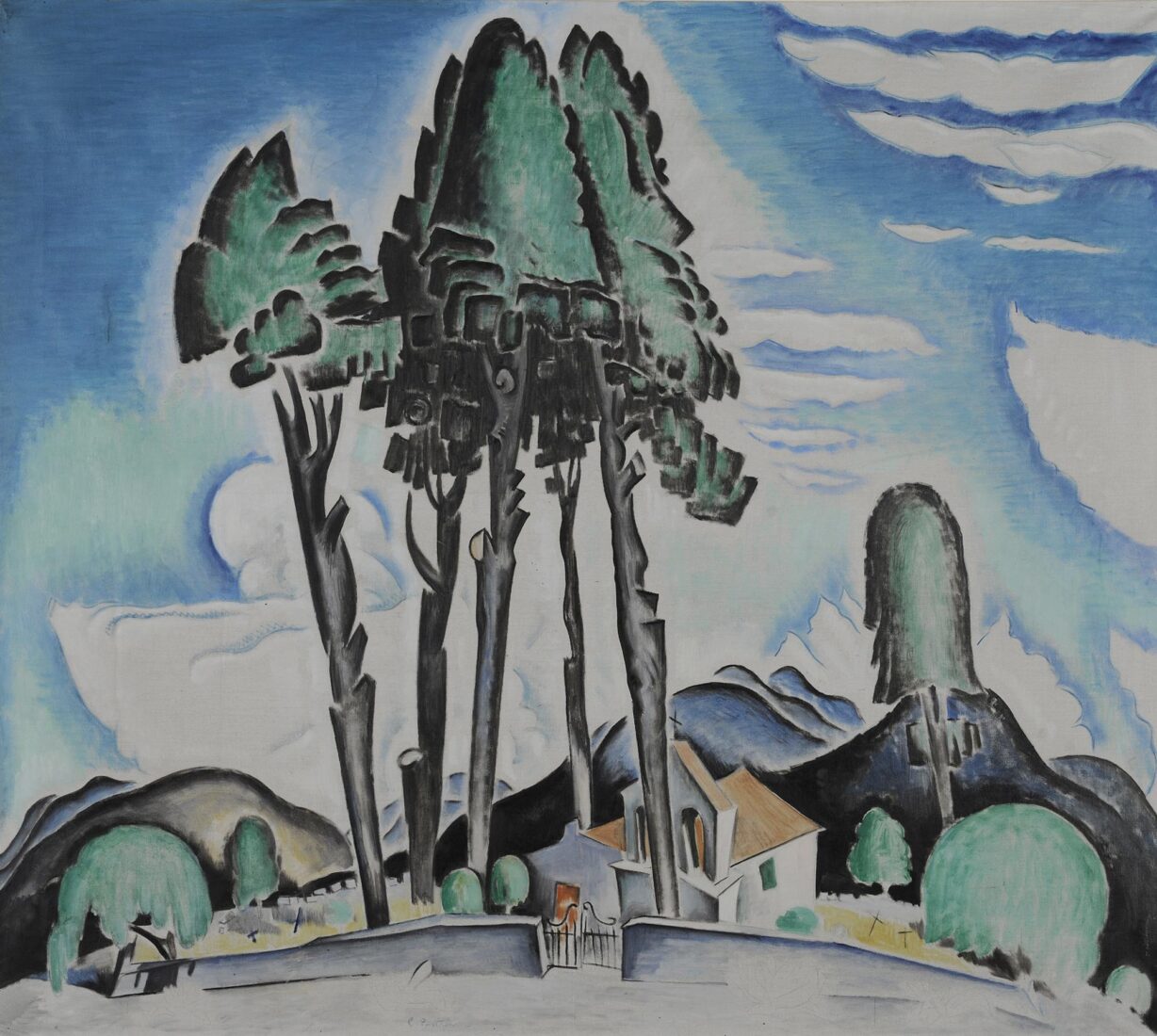
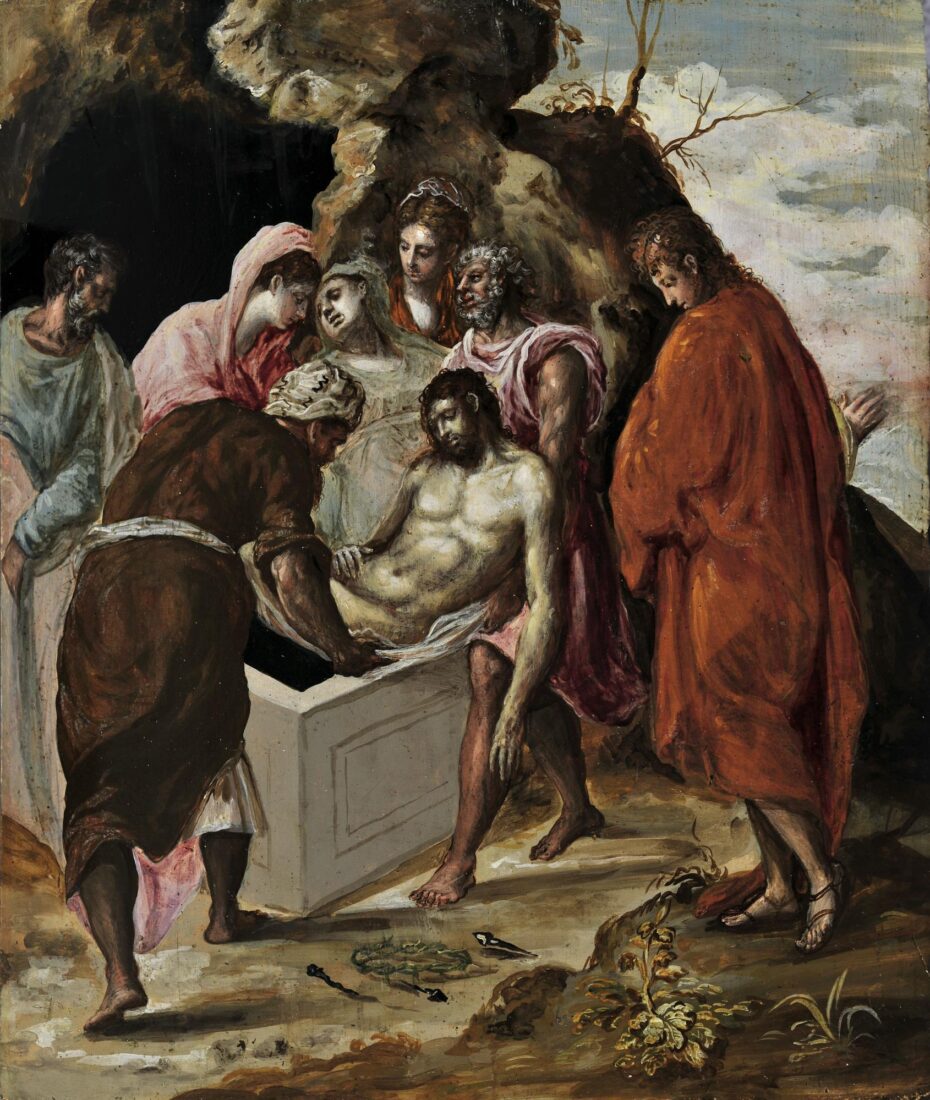
Made in Venice, this work is representative of a particular phase in the artist’s development, that is, at a time when he sought to assimilate the teachings of the art of the Renaissance: the articulation of space in perspective, emphasised here by placing the marble sarcophagus on an angle and by the way the figures stand in space, as well as by the modelling of volumes through chiaroscuro and the shadows projecting against the ground. Of classical proportions, Christ’s body is depicted almost in the guise of an ancient statue. The profuse colour and dramatic expression culminating in the Virgin’s fainting are traits of the Venice Renaissance art. El Greco borrowed many elements in his composition from other Renaissance artists but so masterfully has he arranged them that this is hardly noticeable. The only elements reminding us of the Byzantine provenance of the painter’s art are the wood panel on which the painting is made and the medium of egg tempera, combined here with oil – a medium characteristic of the Italian, especially Venetian Renaissance.
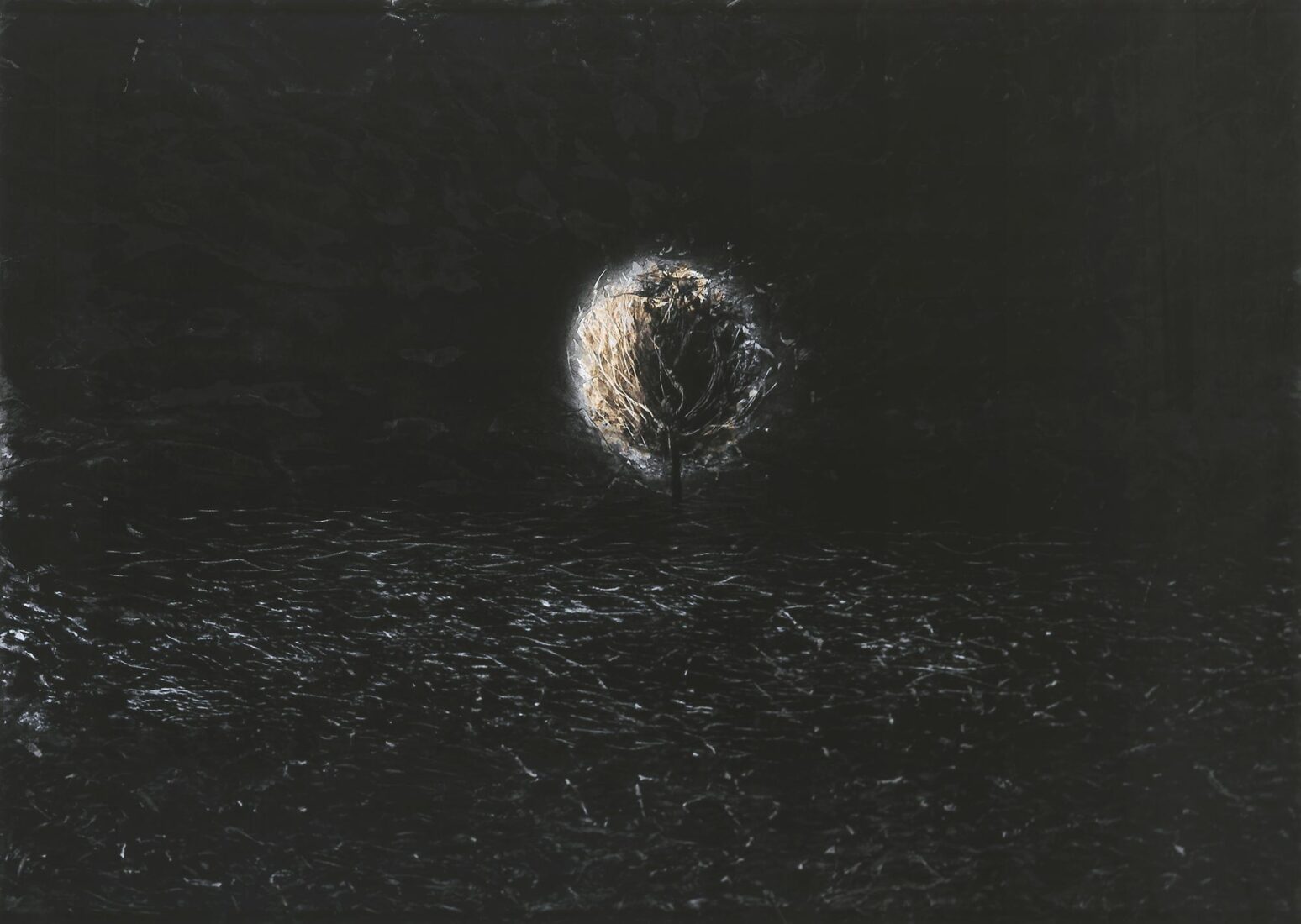
Tassos Christakis’ artistic practice resembles an initiation. His raw material is almost exclusively wood and the transformations it undergoes when it encounters fire. In some cases, his works are the product of the actual burning of the wood. Most of the time, however, Christakis draws on paper (a wood byproduct) with charcoal – the burnt product of the same material. The burning tree, a frontal image of the very materials Christakis uses, is an iconic example of his enterprise. This burning tree is places along the axis of the picture, on a dark ground sparkling with white lights – the results of scraping and scratching the surface of the paper. The solitary burnt-yellow color intimating fire comes from the actual burning of the paper. Christakis’ skillful technique, the preponderance of black-and-white, the minimal composition with the burning tree – a reference to the artist’s own poetic – locate this specific picture as well as his entire oeuvre within the bounds of Minimalism and Conceptualism. Christakis represents these two contemporary art movements in a personal and poetic fashion.
